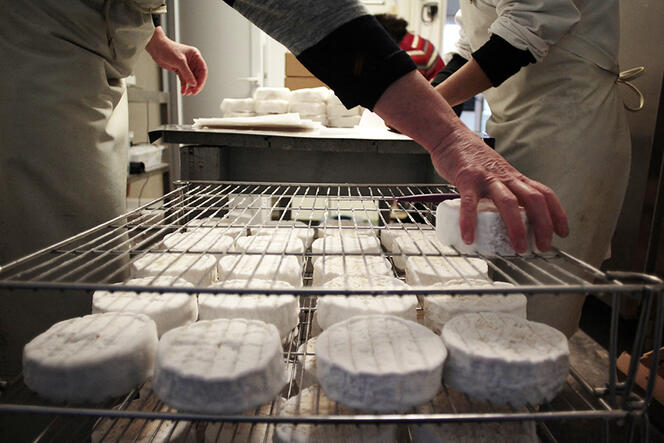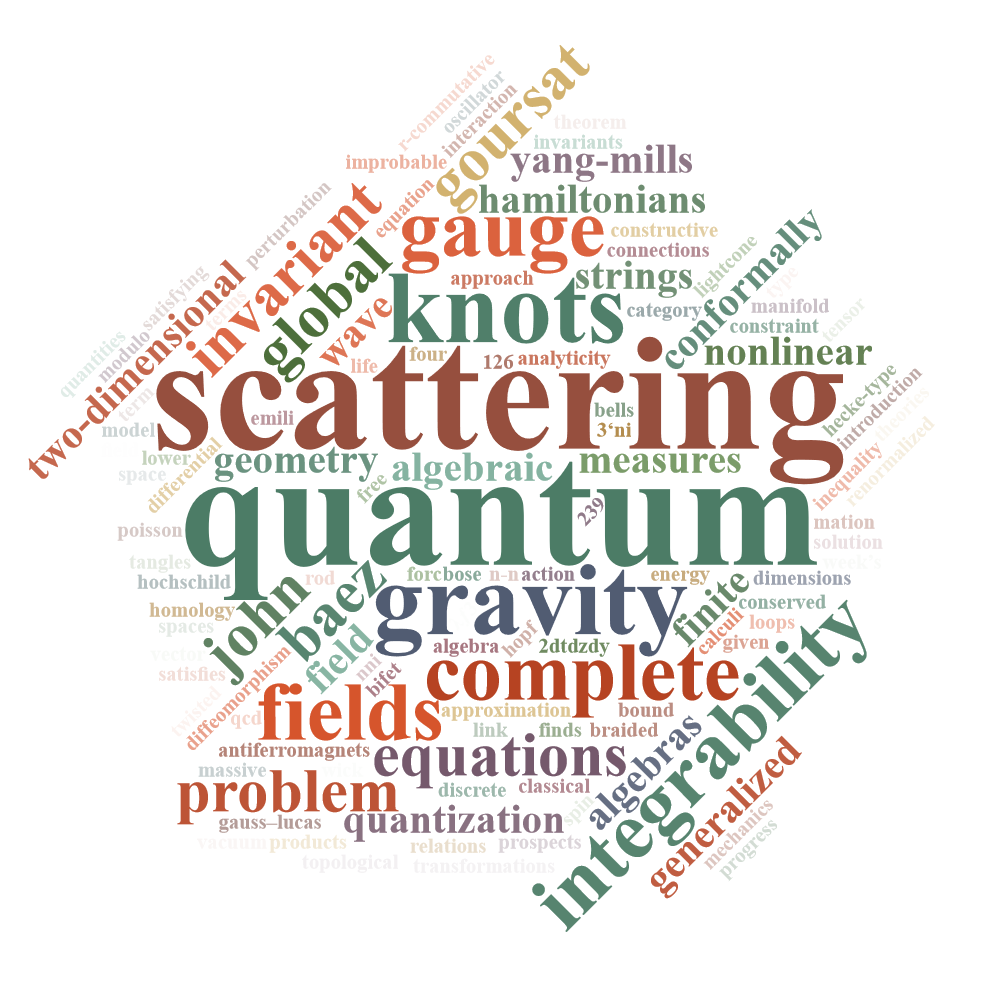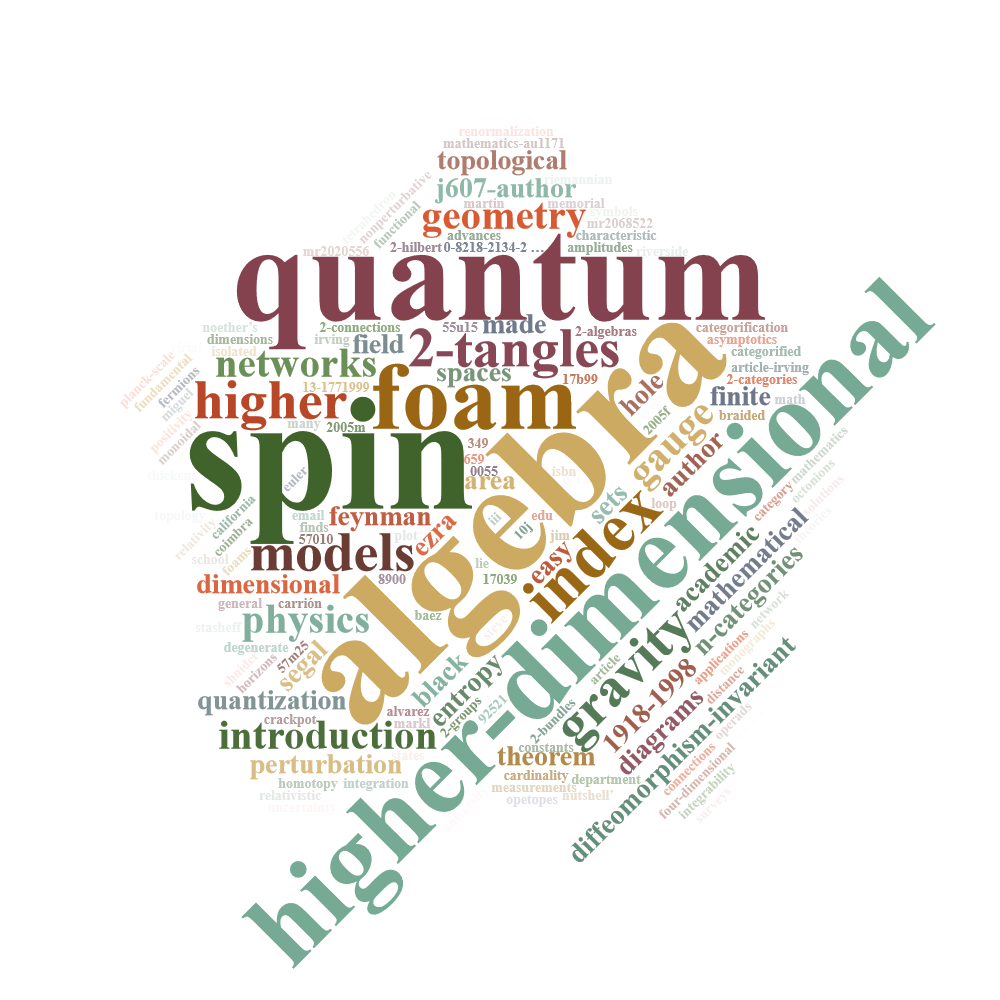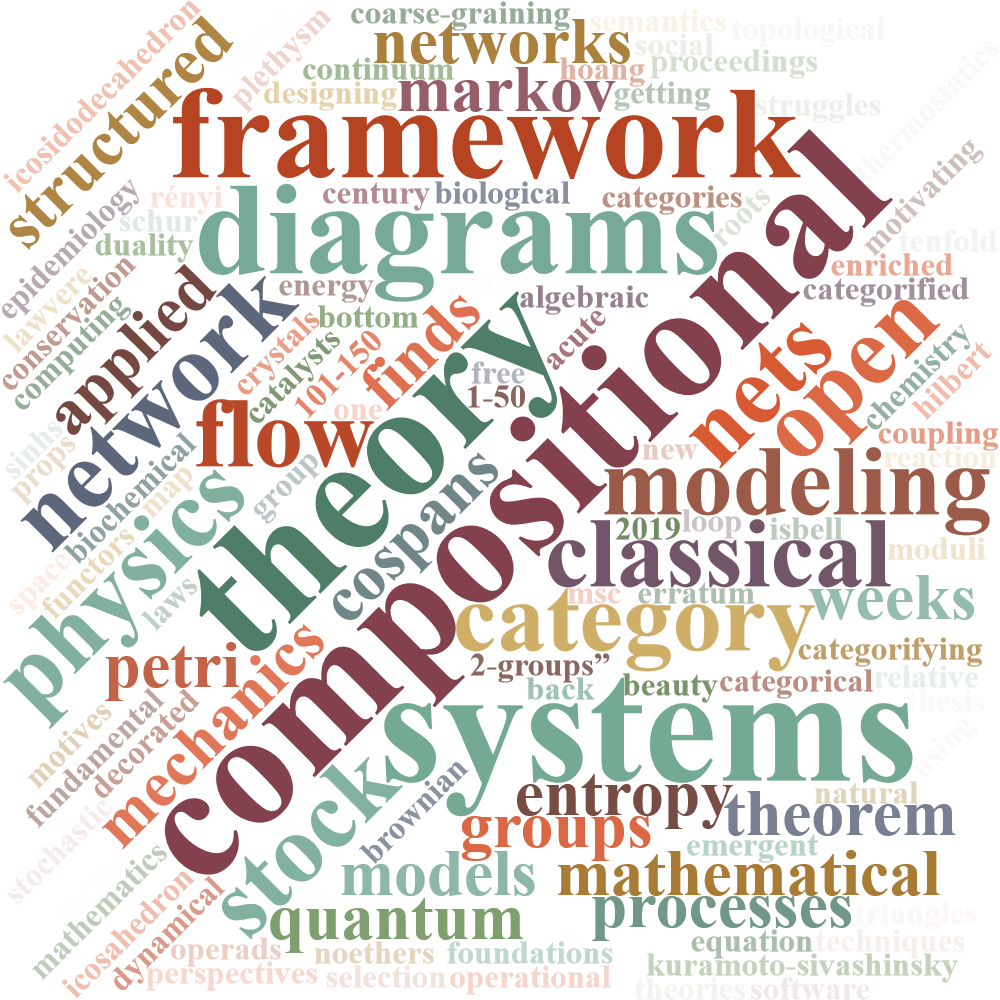
Camembert is an endangered species! It relies on a mold that had lost the ability to reproduce sexually... and now, thanks to inbreeding, this mold has also lost the ability to reproduce using spores. Roquefort is also in trouble, but for Camembert it's worse:
The world over, this other symbol of French gastronomy is inoculated exclusively with one single strain of Penicillium camemberti, a white mutant that was selected for Brie cheeses in 1898 and Camemberts in 1902.I got all this from here, where you can also read about the Roquefort crisis:The problem is that ever since then the strain has been replicated by vegetative propagation only. Until the 1950s, Camemberts still had grey, green or in some cases orange-tinged moulds on their surface. But the industry was not fond of these colours, considering them unappealing, and staked everything on the albino strain of P. camemberti, which is completely white and moreover has a silky texture. This is how Camembert acquired its now-characteristic pure white rind.
Year after year, generation after generation, the albino strain of P. camemberti, which was already incapable of sexual reproduction, lost its ability to produce asexual spores. As a result it is now very difficult for the entire industry to obtain enough P. camemberti spores to inoculate their production of the famous Norman cheese.
Worse still, while the Roquefort PDO (Protected Designation of Origin) standard retains a degree of microbial biodiversity, the PDO specifications for Camembert require farmers and other producers to use P. camemberti exclusively.
To compensate for the shortcomings caused by its degeneration, some cheese makers resort to supplementing P. camemberti with a second species of fungus: Geotrichum candidum, also selected for its white, cottony texture.
So what can be done to save Camembert? Should producers return to a “wild” population, similar to P. camemberti, and restart the long process of domestication? Could they resort to genome editing technologies in order to counter the accumulation of mutations or the loss of specific genes with a given desirable function? “People in the industry sometimes ask us whether it’s possible to modify a gene and allow a strain to sporulate in greater quantities,” Giraud reveals, quickly adding that this would not solve the problem: “Genome editing is another form of selection. What we need today is the diversity provided by sexual reproduction between individuals with different genomes.”
A species that is genetically similar to P. camemberti, called Penicillium biforme, also found in cheese because it is naturally present in raw milk, possesses an incredible genetic and phenotypic diversity. This opens up the possibility of inoculating Camemberts and Bries with P. biforme. If cheese lovers want to keep enjoying these products, they will have to learn to appreciate greater diversity in flavour, colour and texture, perhaps even among cheeses from a single source. And, who knows, thereby contribute to enriching our gastronomic heritage.
Here's what I wrote about from 1985 to 1995:

At this early stage of my career I was doing traditional mathematical physics. I got tenure based on my work on quantum and classical field theory — for example, scattering and complete integrability for classical field theories like Yang-Mills theory. After I got tenure, I got excited about how knot theory is connected to quantum gravity.
Here's what I wrote about from 1995 to 2005:

I was working on spin networks in loop quantum gravity, and I invented the term "spin foams" for 2-dimensional analogues of spin networks: a bunch of us thought they'd be useful for quantum gravity.
Working on this I got interested in 2-tangles — roughly speaking, surfaces that get tangled up in 4d space. And I realized that "higher-dimensional algebra" — the algebra that describes things like 2-tangles — is really exciting, both mathematically and perhaps for physics.
Here's what I wrote about from 2005 to 2015:

I was mainly working on higher categories, also known as n-categories, as an approach to higher-dimensional algebra. I invented the term "2-groups" for categories that come with a multiplication that makes them act like groups. I popularized "groupoidification", a concept invented by my friend James Dolan. And I was trying to apply all these ideas to quantum physics.
I don't know how the non-roman characters got in there, or the word "erklärung" — German for "explanation".
And here's what I wrote about from 2015 to 2024:

Quite different: now I'm using category theory to set up compositional frameworks for different kinds of networks and systems — like Markov processes, Petri nets, and stock and flow diagrams. I'm applying this to epidemiology and chemistry... but yes, I also play around with things like the icosahedron and the icosidodecahedron.
You can do this too, here:

Now I want to start talking about some important well-tempered tuning systems invented by Johann Philipp Kirnberger. But first: who was this guy? As I tried to answer this question for myself I became sort of fascinated with his personality.
Kirnberger was a German music theorist who played an important role in formalizing baroque harmony and counterpoint. He was born in 1721.
As a child he studied the violin and harpsichord at home. He then moved to another town to study the organ, and then at 17 moved again to start seriously studying the violin. At the age of 18, he went to Leipzig to study performance and composition with Johann Sebastian Bach. He did this intermittently for three years, but this seems to have been a pivotal period in his life. Bach was an energetic teacher, with about 300 students over his life, but unfortunately he never wrote down his thoughts on music. In the end, it largely fell to Kirnberger to systematize Bach's ideas on harmony and composition.
Between the ages of 20 and and 30, Kirnberger worked in Poland and wrote a book on Polish dances. He then became a violinist at the court of Frederick II of Prussia, and from the age of 37 until his death at the age of 61 he was music director for the princess of Prussia.
But most of all, Kirnberger was a big fan of Bach. He called Bach "the greatest of all composers." Around the age of 40 he published a book of Bach's clavier pieces, and he worked hard to publish all of Bach's chorales, which finally appeared after Kirnberger's death. He preserved many of Bach's manuscripts in his library. He even wrote some pieces that for a while were attributed to either J. S. Bach or C.P.E. Bach — like this concerto for harpsichord, written when Kirnberger was about 50:
Kirnberger was better as a music theorist than a performer — though as a theorist he was quite polemical. In 1794, ten years after Kirnberger's death, a musician named Friedrich Nicolai wrote:
Kirnberger has many good musical ideas [...] he deserves full credit as a theorist. But he is unable to bring any of his ideas to good musical fruition, perhaps because of insufficient ability. His aim is not to see good music performed, but merely to find music containing "errors" so that he may make learned-and often violent-statements about others' mistakes. As a performer he has practically no skill at all, except when playing his own compositions; his sense of rhythm is especially uncertain.
His frustrations seem to have driven him to mathematics. When Kirnberger was 52, Charles Burney wrote that he
is said to be soured by opposition and disappointment; his present inclination leads him to mathematical studies, and to the theory of music, more than the practice [...] In his late writings, he appears to be more ambitious of the character of an algebraist, than of a musician of genius.
His discovery of the 'atom of Kirnberger', which I explained on January 18th, indeed seems like something only a person with a strong mathematical bent could do!
His three-part theoretical work Die Kunst des reinen Satzes in der Musik, or The Art of Strict Musical Composition, had a big impact in his day. However, he wrote poorly. Nicolai wrote:
Kirnberger considered himself to be a philosophical musician. In reality, he had pondered over his art more than other musicians. For all that, he did not have clear concepts about so many things, still less philosophically correct ones. Because he had no formal education at all and had read little, he lacked much necessary knowledge, which he could acquire only by considerable effort through association with scholars; therefore, he sometimes could not explain rather ordinary things clearly. Scholars who wanted to come to an understanding with him had to divine his meaning.
In fact, parts of Die Kunst des reinen Satzes in der Musik were actually written by a student of Kirnberger's who could write more clearly. This student, Johann Abraham Peter Schulz, said as much:
I had just recently made a systematic reduction of his [Kirnberger's] principles of harmony for my own benefit and satisfaction. And at his request I had applied this system practically to the analysis of two pieces by Joh. Seb. Bach, which are difficult to understand [...] His student's writing pleased the teacher and he permitted it to be published under his name.
That could get someone in trouble today.
Kirnberger was an argumentative man. He was quite harsh in his condemnation of two other important theorists, Rameau and Marpurg. In 1800, a fellow named Reichart wrote:
Kirnberger was a very passionate man who gave himself up to his impetuous temperament [...] The cultivation of his art, as he saw it and believed to embrace it, went before everything. The few righteous musicians whom he acknowledged possessed him completely and absorbed his entire disposition. Everything that did not immediately further the higher part of the art [...] he despised and considered repugnant.
All in all, a curious and interesting character.
As I discussed on January 11th, in a 'well temperament' each key gives a scale with its own different flavor. Quite a number of well temperaments had been used since Andreas Werckmeister invented three of them starting in 1681. (I'll explain those later.) By the time Kirnberger got involved, equal temperament was beginning to take over. In fact in 1760, at the age of 39, he published something called Construction der gleichschwebende Temperatur, about the construction of equal temperament. But in Die Kunst des reinen Satzes in der Musik he explained that he didn't like equal temperament, because it reduced the diversity of scales down to just two: major and minor. And in a letter 19 years later, he wrote:
Equal temperament is absolutely terrible, only being useful in the case of properly positioning the frets of a theorbo, lute or other such similar instrument such as a psaltry, zither etc., as a temperament of another type does not do each string justice.
Today, Kirnberger is mainly known for two well-temperaments called Kirnberger II and Kirnberger III. But he seems to have put work into a least two more tuning systems. First, unsurprisingly, there's his well temperament called Kirnberger I. Second, there is 'rational equal temperament' — a system I explained on January 18th. But this is so close to 12-tone equal temperament that nobody can hear the difference: its only advantage, if you can call it that, is having frequency ratios that are rational numbers — with, unfortunately, rather huge numerators and denominators. I doubt anyone has actually used it, except perhaps as an experiment.
What are Kirnberger I, II and III actually like?
First, as a point of comparison, recall the tuning system that all well-tempered systems are responses to. Namely, quarter-comma meantone:
This system has a lot of fifths that have been lowered by a quarter comma: that is, divided by σ1/4 where σ is the syntonic comma. These 'quarter-comma fifths' are just slightly smaller than the 'just' perfect fifth, namely 3/2. So that's good. It has a lot of 'just' major thirds, with frequency ratios of exactly 5/4, shown as the blue arrows above. So that's great. But to pay the price for all those quarter-comma fifth, it has a 'wolf fifth' that's 128/125 times bigger than all the rest. And that's noticeably ugly!
Well-tempered fifths seek to kill the wolf. Here's how Kirnberger I does it:
Here's Kirnberger II:
And here's Kirnberger III:
Puzzle. Do you see the pattern?
I'll examine these systems in more detail next time.
The quote of Kirnberger saying equal temperament is absolutely terrible comes from here:
It originated in a letter from Kirnberger to someone named Forkel, written around 1779.
I got all my other quotes from here:
Notes is a nice name for a music journal! This article is about Kirnberger and his student Schulz, analyzing how much each might have contributed to the writing of Die Kunst des reinen Satzes in der Musik and also the encyclopedia Allgemeine Theorie der schonen Kunste (General Theory of the Fine Arts). To help figure this out, Jerold investigates Kirnberger's views and personality.
Okay, let's study Kirnberger's three well-tempered tuning systems! I introduced them last time, but now I've developed a new method for drawing tuning systems, which should help us understand them better.
As we saw on January 15th, tuning theory involves two numbers close to 1, called the Pythagorean comma (≈ 1.0136) and the syntonic comma (= 1.0125). While they're not equal, they're so close that practical musicians often don't bother to distinguish them! They call both a comma.
So, my new drawing style won't distinguish the two kinds of comma.
Being a mathematician, I would like to say a lot about why we can get away with this. But that would tend to undercut my claim that the relaxed approach makes things simpler! I don't want to be like the teacher who prefaces the explanation of a cute labor-saving trick with a long and confusing theoretical discussion of when it's justified. So let me start by just diving in and using this new approach.
First I'll illustrate this new approach with some tuning systems I've already discussed. Then I'll show you Kirnberger's three well-tempered systems. At that point you should be in a good position to make up your own well temperaments!
Here is Pythagorean tuning in my new drawing style:
The circle here is the circle of fifths. Most of these fifths are black arrows labeled by +0. These go between notes that have a frequency ratio of exactly 3/2. This frequency ratio gives the nicest sounding fifth: the Pythagorean fifth.
But one arrow on the circle is red, and labeled by -1. This fifth is one comma flat compared to a Pythagorean fifth. In other words, the frequency ratio of this fifth is 3/2 divided by a comma. This arrow is red because it's flat — and it's a fairly bright red because one comma flat is actually quite a lot: this fifth sounds pretty bad!
(The comma here is a Pythagorean comma, but never mind.)
This illustrates a rule that holds for every tuning system we'll consider:
Rule 1. The numbers labeling arrows on the circle of fifths must sum to -1.
Now let's look at Pythagorean tuning again, this time focusing on the arrows inside the circle of fifths:
The arrows inside the circle are major thirds. A few of them are black and labeled +0. These go between notes that have a frequency ratio of exactly 5/4. That's the nicest sounding major third: the just major third.
But a some the arrows inside the circle are green, and labeled by +1. These major thirds are one comma sharp compared to the just major third. In other words, the frequency ratio between notes connected by these arrows is 5/4 times a comma. These arrows are green because they're sharp — and it's a fairly bright green because one comma sharp is actually quite a lot.
(These commas are syntonic commas, but never mind.)
Why do the major thirds work this way? It's forced by the other rule governing all the tuning systems we'll talk about:
Rule 2. The sum of the numbers labeling arrows for any four consecutive fifths, plus 1, equals the number labeling the arrow for the corresponding major third.
This rule creates an inherent tension in tuning systems! To get major thirds that sound really nice, not too sharp, we need some fifths to be flat. Pythagorean tuning is one way this tension can play out.
Now let's look at another tuning system: equal temperament.
Pythagorean tuning had eleven fifths that are exactly right, and one that's 1 comma flat. The flatness was as concentrated as possible! Equal temperament takes the opposite approach: the flatness is spread out equally among all twelve fifths. Rule 1 must still hold: the total flatness of all the fifths is still 1 comma. So each fifth is 1/12 of a comma flat.
How does this affect the major thirds? Rule 2 says that each major third must be 2/3 of a comma sharp, since
My pictures follow some color rules that are too boring to explain in detail, but bright colors indicate danger: intervals that are extremely flat or extremely sharp. In equal temperament the fifths are all reddish because they're all flat — but it's a very dark red, almost black, because they're only slightly flat. The major thirds are fairly sharp, so their blue-green color is more noticeable.
Now let's look at another important tuning system: quarter-comma meantone. This system was very popular from 1550 until around 1690. Then people started inventing well temperaments as a reaction to its defects. So we need to understand it well.
Here it is:
All but one of the fifths are slightly flat: 1/4 comma flat. This is done to create a lot of just major thirds, since Rule 2 says
This is the beauty of quarter-comma meantone! But it's obtained at a heavy cost, as we can see from the glaring fluorescent green.
Because 11 of the fifths are 1/4 comma flat, the remaining one must be a whopping 7/4 commas sharp, by Rule 1:
This is the famous 'wolf fifth'. And by Rule 2, this wolf fifth makes the major thirds near it 2 commas sharp, since
In my picture I wrote '8/4' instead of 2 because I felt like keeping track of quarter commas.
The colors in the picture should vividly convey the 'extreme' nature of quarter-comma meantone. As long as you restrict yourself to playing the dark red fifths and black major thirds, it sounds magnificently sweet. But as soon as you enter the fluorescent green region, it sounds wretched! Well temperaments were created to smooth this system down... without going all the way to the bland homogeneity of equal temperament.
And now let's look at Kirnberger's three well tempered systems. Only the third was considered successful, and we'll see why.
Here is Kirnberger I:
The flatness of the fifths is concentrated in a single fifth, just as in Pythagorean tuning. Indeed, from this picture Kirnberger I looks just like a rotated version of Pythagorean tuning! That's a bit deceptive, because in Kirnberger I the flat fifth is flat by a syntonic rather than a Pythagorean comma. But this is precisely the sort of nuance my new drawing style ignores. And that's okay, because the difference between the syntonic and Pythagorean comma is inaudible.
So the only noticeable difference between Kirnberger I and Pythagorean tuning is the location of flat fifth. And it's hard to see any advantage of putting it so close to C as Kirnberger did, rather than putting it as far away as possible.
Thus, it's not so suprising that I've never heard of anyone actually using Kirnberger I. Indeed it's rare to even see a description of it: it's very obscure compared to Kirnberger II and Kirnberger III. Luckily it's on Wikipedia:
Here is Kirnberger's second attempt:
This time instead of a single fifth that's 1 comma flat, he used two fifths that are 1/2 comma flat.
As a result, only 3 major thirds are just, as compared to 4 in Kirnberger II. But the number of major thirds that are 1 comma sharp has gone down from 8 to 7. The are also 2 major thirds that are 1/2 comma sharp — the bluish ones. So, this system is less 'extreme' than Kirnberger I: the pain of sharp major thirds is more evenly distributed. As a result, this system was more widely used. But it was never as popular as Kirnberger III.
For more, see:
This time instead of a two fifths that are 1/2 comma flat, he used four fifths that are 1/4 comma flat! A very systematic fellow.
This system has only one just major third. It has 2 that are 1/4 comma sharp, 2 that are 2/4 comma sharp, 2 that are 3/4 comma sharp, and only 3 that are 1 comma sharp. So it's noticeably less 'extreme' than Kirnberger II: fewer thirds that are just, but also fewer that are painfully sharp.
I think you really need to stare at the picture for a while, and think about how Rule 2 plays out, to see the beauty of Kirnberger III. But the patterns become a bit more visible if we rotate this tuning system to give it bilateral symmetry across the vertical axis, and write the numbers in a symmetrical way too:
Rotating a tuning system just means we're starting it at a different note — 'transposing' it, in music terminology.
The harpsichord tuning expert Cary Beebe writes:
One of the easiest—and most practical—temperaments to set dates from 1779 and is known as Kirnberger III. For a while, some people thought that this might be Bach’s temperament, seeing as Johann Philipp Kirnberger (1721–1783) learnt from the great JS himself. Despite what you might have been taught, Bach neither invented nor used Equal Temperament. He probably used many different tuning systems—and if he had one particular one in mind for any of his works, he never chose to write clear directions for setting it. Note that his great opus is called the Well-tempered Clavier in English, not the “Equal Tempered Clavichord”, as it has too often been mistranslated. You will find several other Bach temperaments discussed later in this series.There are other commas to learn, and a whole load of other technical guff if you really want to get into this quagmire, but here you will forgive me if we regard the syntonic comma as for all practical purposes the same size as the Pythagorean. After all, don’t you just want to tune your harpsichord instead of go for a science degree?
Here’s how you go about setting Kirnberger III...
Then he explains how to tune a harpischord in this system:
Carey Beebe is my hero these days, because he explains well temperaments better than anyone else I've found. My new style of drawing tuning systems is inspired by his, though I've added some extra twists like drawing all the major thirds, and using colors.
If you're wondering what Beebe and I mean about Pythagorean versus syntonic commas, here you can see it. Here is Kirnberger I drawn in my old style, where I only drew major thirds that are just, and I drew them in dark blue:
Kirnberger I has one fifth that's flat by a factor of the syntonic comma:
But as we go all the way around the circle of fifths the 'total flatness' must equal the Pythagorean comma:
That's just a law of math. So Kirnberger compensated by having one fifth that's flat by a factor of p/σ, which is called the 'schisma':
He stuck this 'schismatic fifth' next to the tritone, since that's a traditional dumping ground for annoying glitches in music. But it barely matters since the schisma is so small.
(That said, the schisma is almost precisely 1/12th of a Pythagorean comma, or more precisely p1/12 — a remarkable coincidence discovered by Kirnberger, which I explained on January 18th. And I did draw the 1/12th commas in equal temperament! So you may wonder why I didn't draw the schisma in Kirnberger I. The answer is simply that in both cases my decision was forced by rules 1 and 2.)
Here's Kirnberger II in a similar style:
Here the schismatic fifth compensates for using two 1/2 commas that are syntonic rather than Pythagorean.
And here's Kirnberger III:
Now the schismatic fifth compensates for using four 1/4 commas that are syntonic rather than Pythagorean.
February 21, 2024
At first glance it's amazing that one of the great British composers of the 1400s largely sank from view until his works were rediscovered in 1850.
But the reason is not hard to find. When the Puritans took over England, they burned not only witches and heretics, but also books — and music! They hated the complex polyphonic choral music of the Catholics.
So, in the history of British music, between the great polyphonists Robert Fayrfax (1465-1521) and John Taverner (1490–1545), there was a kind of gap — a silence — until the Peterhouse Partbooks were rediscovered.
These were an extensive collection of musical manuscripts, handwritten by single scribe between 1539 and 1541. Most of them got lost somehow and found only in the 1850s. Others were found even later, in 1926! They were hidden behind a panel in a library — probably hidden from the Puritans.
The 1850 batch contains wonderful compositions by Nicholas Ludford (~1485-1557). One music scholar has called him "one of the last unsung geniuses of Tudor polyphony". Another wrote:
it is more a matter of astonishment that such mastery should be displayed by a composer of whom virtually nothing was known until modern times.Ludford's work was first recorded only in 1993, and much of the Peterhouse Partbooks have been recorded only more recently. A Boston group called Blue Heron released a 5-CD set, starting in 2010 and ending in 2017. It's magnificent!
Below you can hear the Sanctus from Nicholas Ludford's Missa Regnum mundi. It has long, sleek lines of harmony; you can lose yourself trying to follow all the parts.
His fame comes from his theoretical writings and his influence on Bach. Most importantly, in his 1687 book Musikalische Temperatur he described the first 'well tempered' tuning systems—though he didn't use that term.
Johann Sebastian Bach read and was influenced by Werckmeister's work. The first book of Bach's Well-Tempered Clavier came out in 1722. This was not only an advertisement for the virtues of well tempered tuning systems, it seems to have launched the term 'well temperament'. But Bach was especially influenced by Werckmeister's writings on counterpoint.
Werckmeister believed that well-written counterpoint reflected the orderly movements of the planets — especially invertible counterpoint, where as the music goes on, a melody that starts in the high voice switches to the low voice and vice versa. Bach's Invention No. 13 in A minor is full of invertible counterpoint:

The connection to planets may sound bizarre now, but the 'music of the spheres' or 'musica universalis’ was a long-lived and influential idea. Werckmeister was influenced by Kepler's 1619 Harmonices Mundi, which has pictures like this:
But the connection between music and astronomy goes back much further: at least to Claudius Ptolemy, and probably even earlier. Ptolemy is most famous for his Almagest, which quite accurately described planetary motions using a geocentric system with epicycles. But his Harmonikon, written around 150 AD, is the first place where just intonation is clearly described, along with a number of related tuning systems. And it's important to note that this book is not just about 'harmony theory'. It's about a subject he calls 'harmonics': the general study of vibrating or oscillating systems, including the planets. Thinking hard about this, it become clearer and clearer why the classical 'quadrivium’ grouped together arithmetic, geometry, music and astronomy.
In Grove Music Online, George Buelow digs a bit deeper:
Werckmeister was essentially unaffected by the innovations of Italian Baroque music. His musical surroundings were nourished by traditions whose roots lay in medieval thought. The study of music was thus for him a speculative science related to theology and mathematics. In his treatises he subjected every aspect of music to two criteria: how it contributed to an expression of the spirit of God, and, as a corollary, how that expression was the result of an order of mathematical principles emanating from God.
"Music is a great gift and miracle from God, an art above all arts because it is prescribed by God himself for his service." (Hypomnemata musica, 1697.)
"Music is a mathematical science, which shows us through number the correct differences and ratios of sounds from which we can compose a suitable and natural harmony." (Musicae mathematicae Hodegus curiosus, 1686.)Musical harmony, he believed, actually reflected the harmony of Creation, and, inspired by the writings of Johannes Kepler, he thought that the heavenly constellations emitted their own musical harmonies, created by God to influence humankind. He took up a middle-of-the-road position in the ancient argument as to whether Ratio (reason) or Sensus (the senses) should rule music and preferred to believe in a rational interplay of the two forces, but in many of his views he remained a mystic and decidedly medieval. No other writer of the period regarded music so unequivocally as the end result of God’s work, and his invaluable interpretations of the symbolic reality of God in number as expressed by musical notes supports the conclusions of scholars who have found number symbolism as theological abstractions in the music of Bach. For example, he not only saw the triad as a musical symbol and actual presence of the Trinity but described the three tones of the triad as symbolizing 1 = the Lord, 2 = Christ and 3 = the Holy Ghost.
The Trinity symbolism may seem wacky, but many people believe it pervades the works of Bach. I'm not convinced yet — it's not hard to find the number 3 in music, after all. But if Bach read and was influenced by the works of Werckmeister, maybe there really is something to these theories.
All but one of the fifths are 1/4 comma flat, making the thirds built from those fifths 'just', with frequency ratios of exactly 5/4: these are the black arrows labelled 0. Unfortunately, the sum of the numbers on the circle of fifths needs to be -1. This forces the remaining fifth to be 7/4 commas sharp: it's a painfully out-of-tune 'wolf fifth'. And the thirds that cross this fifth are forced to be even worse: 8/4 commas sharp. Those are the problems that Werckmeister sought to solve with his next tuning system!
4 of the fifths are 1/4 comma flat, so the total of the numbers around the circle is -1, as required by the laws of math, without needing any positive numbers. This means we don't need any fifths to be sharp. That's nice. But the subtlety of the system is the location of the flatted fifths: starting from C in the circle of fifths they are the 1st, 2nd, 3rd and... not the 4th, but the 6th!
I'll talk about this more next time. For now, here's a more elementary point. Comparing this system to quarter-comma meantone, you can see that it's greatly smoothed down: instead of really great thirds in black and really terrible ones in garish fluorescent green, Werckmeister III has a gentle gradient of mellow hues. That's 'well temperament' in a nutshell.
For more, see:
As we go around the circle of fifths starting from B♭, every other fifth is 1/3 comma flat... for a while. But if we kept doing this around the whole circle, we'd get a total of -4. The total has to be -1. So we eventually need to compensate, and Werckmeister IV does so by making two fifths 1/3 comma sharp.
I will say more about Werckmeister IV in a post devoted to systems that use 1/3 and 1/6 commas. But you can already see that its color gradient is sharper than Werckmeister III. Probably as a consequence, it was never very popular.
For more, see:
Compared to Werckmeister III this has an extra fifth that's a quarter comma flat — and thus, to compensate, a fifth that's a quarter comma sharp. The location of the flat fifths seems a bit more random, but that's probably just my ignorance. For more, see:
There is an excellent article about this:
Any discussion regarding Baroque keyboard tunings normally includes the assumption that Baroque musicians employed a variety of unequal temperaments, allowing them to play in all keys but with individual keys exhibiting unique characteristics, the more frequently used diatonic keys featuring purer 3rds than the less common chromatic ones. Figuring prominently in this discussion are Andreas Werckmeister's various suggestions for tempered tuning, which he introduces in his Musicalische Temperatur. This is not Werckmeister's last word on the subject. In fact, the Musicalische Temperatur is an early publication, and the following decade would see numerous further publications by him, a number of which speak on the subject of temperament.Of particular interest in this regard are Hypomnemata Musica (in particular chapter 11), Die Nothwendigsten Anmerckungen (specifically the appendix in the undated second edition}, Erweiterte und verbesserte Orgel-Probe (in particular chapter 32), Harmonologia Musica (in particular paragraph 27) and Musicalische Paradoxal-Discourse (in particular chapters 13 and 23-5). Throughout these publications, Werckmeister increasingly championed equal temperament. Indeed, in his Paradoxal Discourse much of the discussion concerning other theoretical issues rests on the assumption of equal temperament. Also apparent is his increasing concern with theological speculation, resulting in a theological justification taking precedence over a musical one in his argument for equal temperament. This article traces Werckmeister's path to equal temperament by examining his references to it in his publications and identifying the supporting arguments for his insistence on equal temperament.
In his Paradoxal Discourse, Werckmeister wrote:
Some may no doubt be astonished that I now wish to institute a temperament in which all 5ths are tempered by 1/12, major 3rds by 2/3 and minor 3rds by 3/4 of a comma, resulting in all consonances possessing equal temperament, a tuning which I did not explicitly introduce in my Monochord.
This is indeed equal temperament:
And in a pun on 'wolf fifth', he makes an excuse for not talking about equal temperament earlier:
Had I straightaway assigned the 3rds of the diatonic genus, that tempering which would be demanded by a subdivision of the comma into twelve parts, I would have been completely torn apart by the wolves of ignorance. Therefore it is difficult to eradicate an error straightaway and at once.
However, it seems more likely to me that his position evolved over the years.